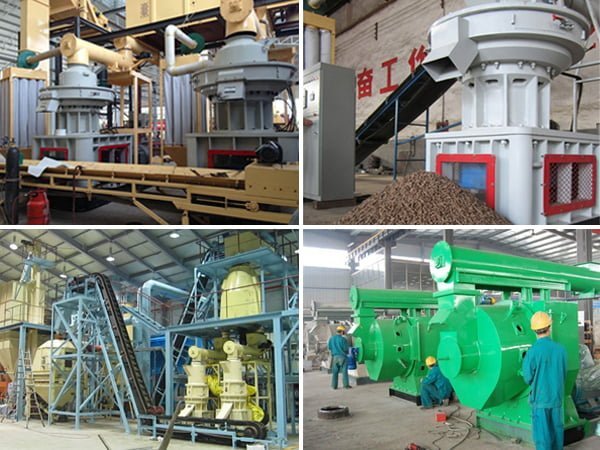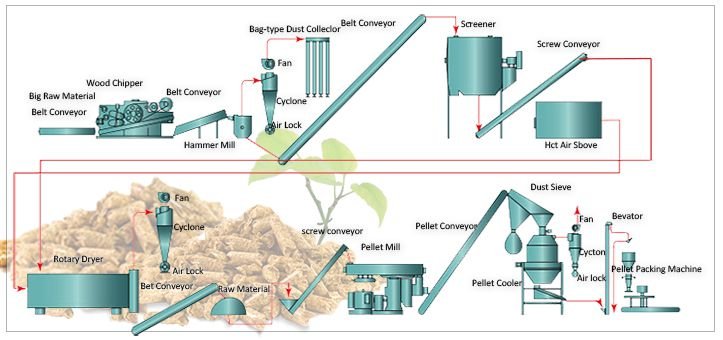Innovations in pellet production aim to streamline processes, enhance efficiency, and reduce environmental impact, paving the way for sustainable and scalable solutions.
Greening the Industry: How Innovations in Pellet Production are Driving Sustainability Forward
In recent years, there has been a growing recognition of the need for sustainable industrial practices to reduce the environmental impact of various industries. With the increasing concern over climate change and the depletion of natural resources, it has become imperative for industries to adopt more sustainable methods of production. One such method is pellet production, which has gained popularity due to its ability to promote sustainability in industry.
The Role of Pellet Production in Sustainable Industry
Pellet production involves the conversion of raw materials, such as biomass or waste materials, into small, compact pellets that can be used as fuel or feedstock in various industrial processes. These pellets have a number of uses in industry, including as a renewable energy source, as a replacement for fossil fuels, and as a raw material for the production of various products.
The benefits of using pellets in industrial processes are numerous. Firstly, pellets are a renewable energy source, meaning they can be produced indefinitely without depleting natural resources. This makes them a more sustainable alternative to fossil fuels, which are finite and contribute to greenhouse gas emissions.
Secondly, pellets have a higher energy density than raw biomass or waste materials, making them more efficient and cost-effective to transport and store.
Finally, pellets can be produced from a wide range of raw materials, including agricultural residues, wood waste, and even municipal solid waste. This not only helps to reduce waste and landfill usage but also provides an opportunity to utilize materials that would otherwise go to waste.
The Evolution of Pellet Production Methods
Pellet production has evolved significantly over time, with advancements in technology and processes leading to more efficient and sustainable methods. The history of pellet production can be traced back to the 1970s when wood pellets were first used as a heating fuel in Europe. Since then, pellet production has expanded to include other types of biomass and waste materials.
There are several methods used in pellet production, each with its own advantages and disadvantages. The most common method is the ring die pellet mill, which uses a rotating die and rollers to compress the raw material into pellets. This method is efficient and produces high-quality pellets but requires a significant amount of energy and can be expensive to operate. Another method is the flat die pellet mill, which is smaller and more affordable but produces lower-quality pellets. Other methods include extrusion and briquetting, which involve different processes to compress the raw material into pellets.
The Advantages of Pellet Production for Sustainability
The use of pellets in industry offers a number of environmental and economic benefits. From an environmental perspective, using pellets as a renewable energy source helps to reduce greenhouse gas emissions and dependence on fossil fuels. Pellets have a lower carbon footprint compared to traditional fuels such as coal or oil, making them a more sustainable option for industries looking to reduce their environmental impact.
In addition to the environmental benefits, there are also economic advantages to using pellets in industry. Firstly, pellets are often cheaper than fossil fuels, making them a cost-effective alternative for industries. Secondly, the production of pellets can create jobs and stimulate local economies, particularly in rural areas where biomass or waste materials are abundant. Finally, using pellets as a raw material can help to reduce waste and landfill usage, saving disposal costs for industries.
Innovations in Pellet Production Technology
Advancements in technology have led to several innovations in pellet production, making the process more efficient and sustainable. One such innovation is the use of automation and computer control systems in pellet mills, which allows for precise control over the production process and reduces the risk of human error. This not only improves the quality of the pellets but also increases productivity and reduces energy consumption.
Another innovation is the development of torrefaction technology, which involves heating biomass or waste materials at high temperatures in the absence of oxygen. This process removes moisture and volatile compounds from the raw material, resulting in a more stable and energy-dense product. Torrefied pellets have a higher energy content and are more resistant to moisture, making them easier to handle and transport.
The Use of Renewable Energy Sources in Pellet Production
The use of renewable energy sources in pellet production is crucial for promoting sustainability. The production of pellets requires energy for grinding, drying, and compressing the raw material, as well as for transportation and storage. By using renewable energy sources, such as solar or wind power, the carbon footprint of pellet production can be significantly reduced.
There are several types of renewable energy sources used in pellet production. Solar energy can be used to power the drying process, which removes moisture from the raw material before it is compressed into pellets. Wind energy can be used to generate electricity for the pellet mill, reducing the reliance on fossil fuels. Biomass energy can also be used in pellet production, with the waste heat from biomass power plants being utilized to dry the raw material or generate steam for the pellet mill.
The Importance of Raw Material Sourcing for Sustainable Pellet Production
The sustainability of pellet production is heavily dependent on the sourcing of raw materials. It is important to ensure that the raw materials used in pellet production are obtained from sustainable sources and do not contribute to deforestation or other environmental issues. Responsible sourcing practices, such as using certified sustainable biomass or waste materials, can help to promote sustainability in pellet production.
The impact of raw material sourcing on the sustainability of pellet production goes beyond environmental considerations. It also includes social and economic factors, such as ensuring fair wages and working conditions for workers involved in the collection and processing of raw materials. By promoting responsible sourcing practices, industries can contribute to sustainable development and support local communities.
The Impact of Pellet Production on Carbon Footprint Reduction
One of the key benefits of using pellets in industry is the reduction in carbon emissions. Pellets have a lower carbon footprint compared to traditional fuels, such as coal or oil, due to their renewable nature and lower carbon content. By replacing fossil fuels with pellets, industries can significantly reduce their carbon emissions and contribute to global efforts to mitigate climate change.
The potential impact of increased pellet production on carbon footprint reduction is significant. As more industries adopt pellet production as a sustainable alternative, the demand for pellets will increase, leading to greater production and utilization of renewable energy sources. This, in turn, will result in a further reduction in carbon emissions and a shift towards a more sustainable and low-carbon economy.
The Role of Certifications in Promoting Sustainable Pellet Production
Certifications play a crucial role in promoting sustainable pellet production by providing assurance that the pellets meet certain environmental and social standards. There are several types of certifications available for sustainable pellet production, including forest certification schemes, such as the Forest Stewardship Council (FSC) or the Programme for the Endorsement of Forest Certification (PEFC), which ensure that the raw materials used in pellet production are sourced from responsibly managed forests.
Other certifications focus on the sustainability of the entire supply chain, including the production, processing, and transportation of pellets. These certifications, such as the Sustainable Biomass Program (SBP) or the Roundtable on Sustainable Biomaterials (RSB), provide assurance that the pellets meet certain sustainability criteria, such as greenhouse gas emissions reductions or social responsibility.
The Future of Pellet Production and Sustainable Industry
The future of pellet production holds great potential for promoting sustainability in industry. As awareness of the environmental and economic benefits of using pellets increases, more industries are likely to adopt pellet production as a sustainable alternative. This will lead to increased demand for pellets and further advancements in technology and processes.
However, there are also challenges and opportunities for the future of pellet production. One of the challenges is the availability and sourcing of raw materials. As the demand for pellets increases, there may be concerns about the sustainability and availability of biomass or waste materials. This highlights the importance of responsible sourcing practices and the need to explore alternative sources of raw materials, such as agricultural residues or algae.
The Importance of Greening the Industry through Pellet Production Innovations
In conclusion, pellet production plays a crucial role in promoting sustainability in industry. By using pellets as a renewable energy source or as a raw material, industries can reduce their environmental impact and contribute to global efforts to mitigate climate change. The evolution of pellet production methods and advancements in technology have made the process more efficient and sustainable, while the use of renewable energy sources and responsible sourcing practices further enhance its sustainability.
The future of pellet production holds great potential for promoting sustainability in industry, but it also presents challenges that need to be addressed. By investing in research and development, promoting responsible sourcing practices, and adopting certifications, industries can continue to innovate and improve the sustainability of pellet production. With increased awareness and adoption of pellet production, industries can play a significant role in greening the industry and creating a more sustainable future.
Originally posted 2024-04-01 13:08:53.



